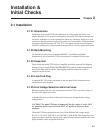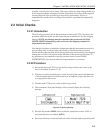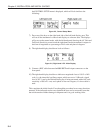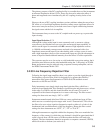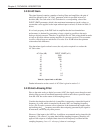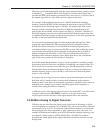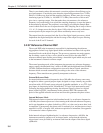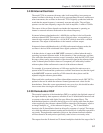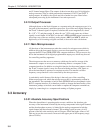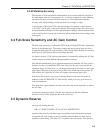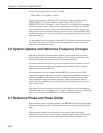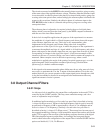
3-4
Chapter 3, TECHNICAL DESCRIPTION
3.2.04 AC Gain
The signal channel contains a number of analog filters and amplifiers, the gain of
which are defined by the “AC Gain” parameter, which is specified in terms of
decibels (dB). For each value of AC Gain there is a corresponding value of the
INPUT LIMIT parameter, which is the maximum instantaneous (peak) voltage or
current that can be applied to the input without input overload, as shown in table 3-1
below.
It is a basic property of the DSP lock-in amplifier that the best demodulator
performance is obtained by presenting as large a signal as possible to the main
analog to digital converter. Therefore, in principle, the AC Gain value should be made
as large as possible without causing amplifier or converter overload. This constraint
is not too critical however and the use of a value 10 or 20 dB below the optimum
value makes little difference.
Note that when signal overload occurs, the only action required is to reduce the
AC Gain value.
AC Gain (dB) INPUT LIMIT (mV)
0 3000
10 1000
20 300
30 10
40 30
50 10
60 3
70 1
80 0.3
90 0.1
Table 3-1, Input Limit vs AC Gain
Further information on the control of AC Gain is given in section 3.4
3.2.05 Anti-Aliasing Filter
Prior to the main analog to digital converter (ADC) the signal passes through an anti-
aliasing filter to remove unwanted frequencies which would cause a spurious output
from the ADC due to the nature of the sampling process.
Consider the situation when the lock-in amplifier is measuring a sinusoidal signal of
frequency f
signal
Hz, which is sampled by the main ADC at a sampling frequency
f
sampling
Hz. In order to ensure correct operation of the instrument the output values
representing the f
signal
frequency must have been uniquely generated by the signal to
be measured, and not by any other process.
However, if the input to the ADC has, in addition, an unwanted analog sinusoid with
frequency f
1
Hz, where f
1
is greater than half the sampling frequency, then this will
appear in the output as a sampled-data sinusoid with frequency less than half the
sampling frequency, f
alias
= |f
1
- nf
sampling
|, where n is an integer.




